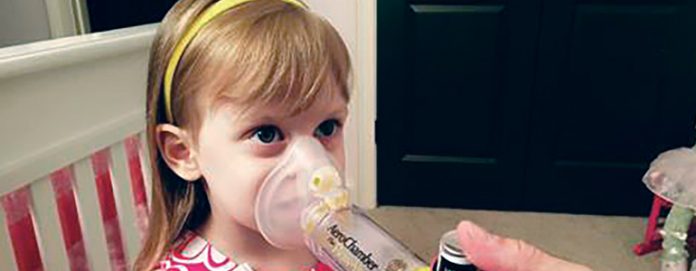From coast to coast, September is a leading month for asthma attacks in kids. And it’s not a coincidence that the timing overlaps with kids heading back to school.From coast to coast, September is a leading month for asthma attacks in kids. And it’s not a coincidence that the timing overlaps with kids heading back to school.
During the summer months, asthmatics often enjoy a welcome reprieve from symptoms. With low allergen counts and fewer respiratory illnesses floating around, many kids go the entire summer without “needing” an inhaler. They run, swim and spend hours outside without difficulty.
Inevitably, though, a temporary reprieve leads to the kind of conversation our pediatric pulmonologists dread: “He’s done so great; I really think he’s outgrown his asthma. He doesn’t need his medications any more, does he?”Emergency room visits for asthma begin to climb in August and peak in September and October. There are many potential reasons for this: peak ragweed (and other weed allergens) counts, anxiety associated with going back to school, changes to routine and increased viral exposures.
While many of those triggers can’t be controlled, there are some very important steps every parent can do to protect their children during this challenging time.
- See your physician and create an updated asthma action plan. The plan should outline how to recognize your child’s triggers, how to avoid triggers and how to manage symptoms as soon as they occur. Ideally, this should be done before school starts, but late is better than never! If available, obtain lung function testing. Swelling and inflammation of the airways may show up on these tests before you or your child notice symptoms. Make sure you leave with multiple copies of the action plan – one for each caretaker, including teachers and coaches.
- Get refills for all medications. If your child also has food allergies, be sure to obtain a food action plan and an up-to-date epipen.
- Without a spacer device, less than 10 percent of the medication will actually get to the lungs. Be sure to have a spacer device for both home and school. Most insurance companies will approve a rescue medication for both home and school if your provider indicates as such on the prescription.
- Focus on taking (or restarting) you child’s daily controller medication. Remember this is the medication that is necessary to prevent an asthma attack. The earlier you start, the more effective it will be during those times of stress.
- Make an appointment with your child’s teacher, coach or other caregiver to review triggers, signs of distress and how your child typically responds to medication. Develop a plan to keep the classroom free from potential triggers. Georgia law allows all children to carry an albuterol inhaler with parent and physician permission. Together with the teacher, determine where the inhaler will be stored.
The goal for every child with asthma should be to use the least amount of medicine to achieve the highest level of functioning. A child with asthma should have a good night’s sleep, free of coughing or frequent awakenings, and should be able to participate safely in activity. Remember: Asthma can be controlled, not cured. For most, it’s a lifetime condition.





